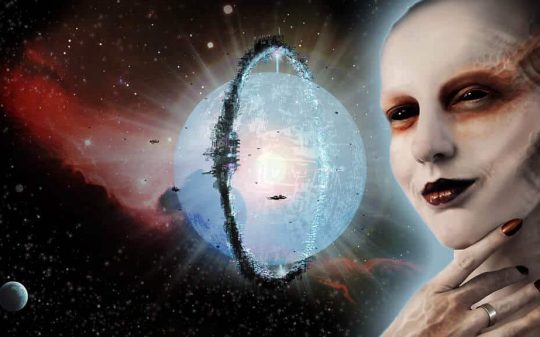Remember the mysterious “dimming star” that had everyone thinking of a giant artificial structure built by extraterrestrials in order to harvest its energy? Well, further analysis deepen the mystery on one side, but sheds light on the other.
There were some theories denying the alien hypothesis, with the most popular one being the swarm of orbiting comets who were thought to cause the anomalous dip in brightness.
However, the latest analysis of the star system KIC 8462852, also known as Tabby’s Star, reveals that the strange dip in brightness has been occurring for more than a century, and it’s likely not caused by the cloud of orbiting comets. So what could be causing all this?
Bradley Schaefer, a physics and astronomy professor at Louisiana State University, examined data from a Harvard University archive of digitally scanned photographic plates of the sky dating back more than a century. He compiled the data and realized that the star system also dimmed between 1890 and 1989.
This star’s dimming is unique and inexplicable, Schaefer told.
Millions of these stars have been monitored for this sort of thing, and they don’t fade, he said.
An academic paper was published by researchers from Yale University in September, discussing the “swarm of comets” possibility. However, after Schaefer presented the data he found in the photographic plates, Tabby’s Star became an enigma once again.
The probability of a comet family creating the erratic dip in brightness is highly unlikely, Schaefer said.
The century-long dimming trend requires an estimated 648,000 giant comets… all orchestrated to pass in front of the star within the last century, he writes in the research paper.
The trouble is that Tabby’s Star, it’s a perfectly ordinary star. The only thing that was unusual about the star was the dip seen by Kepler.
After NASA’s Kepler Telescope investigated KIC 8462852’s bizarre dimming from 2009 to 2013, it revealed that Tabby’s Star, unlike ordinary stars that slowly dip in brightness when planets pass by them, has displayed unusual fluctuations of light that sometimes decrease by as much as 20%.
So if we’re not talking about comets anymore, the anomalous dip has to be caused (still) by something else – a colossal body of some sort that when orbiting around this particular star, it blocks 20% of its brightness. Could it be a Dyson sphere after all?
While The Search for Extraterrestrial Intelligence Institute (SETI) is trying to dismiss this theory, since no radio signals were picked up from this particular star system, other researchers and astronomers seem to somehow back up the alien possibility, even though they won’t admit it entirely.
While some believe that an advanced ET race has other means of communication, thus explaining why no radio signals were intercepted so far, others won’t fully admit the alien assumption since there is no conclusive proof (yet).
In November, SETI’s senior astronomer Seth Shostak told CNN they hadn’t picked up any radio signals, but that doesn’t rule out the intelligent life assumption:
There is estimated to be in our galaxy alone a trillion planets, and we can see 100 billion galaxies. It’s believed that one in 10 stars may have a habitable world capable of supporting life.
At the moment, astronomers still cannot explain what’s going on with KIC 8462852, but if we look all at the major effort put into building grand space telescopes this upcoming years, we might understand that a future meeting with intelligent extraterrestrials isn’t so far away after all.
Is it possible that our governments already know more about this phenomenon and are now preparing humanity for full disclosure? Do you think we are prepared? Share your thoughts.
Source: CNN











Trackbacks/Pingbacks